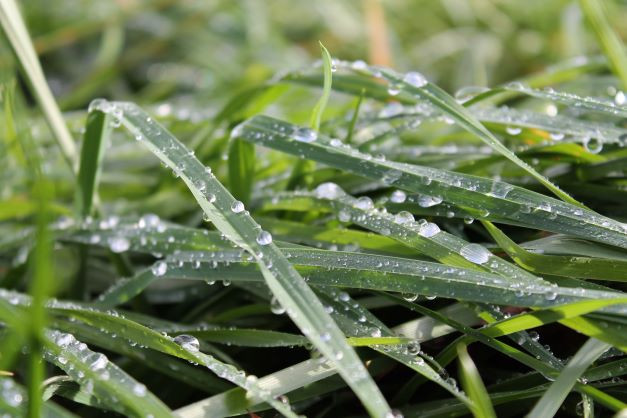
The philosophy is simple:
1. Watch what nature does.
2. Do that.
Why?
Because nature is wired to regenerate.

What we know:
🌎 1. Nature keeps carbon in soil.
👉 In soil, carbon is gold. It feeds plants. It feeds microorganisms. It's the foundation of the food chain. Healthy, carbon-rich soil is one of the most complex living systems on earth.
🡇
🌱 At J&L Green Farm, everything we do is about the soil. We get out of nature's way. We work with nature instead of against it. We create conditions in which nature can vacuum carbon out of the atmosphere and shuttle it into healthy soil through plants.

🌎 2. Nature limits soil disturbance.
❌ Tillage (mechanically turning soil to prepare for seeding) destroys soil's structure. It exposes underground organisms to sun and weather they can't survive. It releases carbon into the sky. Chemical disturbances (pesticides, herbicides, synthetic fertilizers) devastate healthy soil by killing the beneficial organisms who live there.
🡇
🌱 At J&L Green Farm, nature is our Director of Operations. Nature doesn't mechanically turn the soil or break it into pieces—neither do we. Nature doesn't apply chemicals or synthetics—neither do we. Nature doesn't view mechanical or chemical soil disturbance as normal or necessary. Neither do we.

🌎 3. Nature covers soil.
✅ Plant cover prevents erosion from wind and water. It insulates soil in the winter and cools it in the summer. Plants turn the sun's energy into food. Plants provide habitat for diverse organisms below-ground and above.
🡇
🌱 On our farm, we are all about the green (and not just because of our name). Sure, we're meat farmers. But really? We're grass farmers.
🌾🌾🌾
👉 The entire ecosystem of our business follows nature's recipe for healthy groundcover. As a result, our pastures attract pollinators. They generate healthy topsoil. They feed our animals. They sequester carbon. They promote biodiversity. And they replenish essential minerals, vitamins, fatty acids and phytonutrients in our human food system—through the meat of animals who munch and peck our native groundcover every day.

🌎 4. Nature collects water in soil.
💦 Healthy soil is an enormous sponge. Its ability to store water allows plants and organisms to survive. It softens the impact of heavy rainfall to reduce flooding, erosion, and runoff. It modulates global temperatures by acting as a cooling unit for the Earth's surface.
🡇
🌱 Industrial farmers look to the sky for rain. They install costly irrigation systems. Regenerative farmers look to the ground, and cultivate nature's sponge.

🌎 5. Nature puts creatures on soil.
🌀
Nature never "farms" without animals.
—Paul Hawken
🌀
🦬 Talk about a system: Grazing animals stimulate plant growth as they tear leaves from cover crops. Plants respond with a growth spurt, releasing carbon-rich sugars into the soil. Root sugars feed microorganisms at the base of the food chain. A while later, greenery digested, grazing animals fertilize the soil. Later yet, optimally-healthy meat from these optimally-healthy animals becomes clean, wholesome food for human communities.
🡇
🌱 At J&L Green Farm, we look to grassland ecology to guide our practices. Just as bison travel in tight herds, constantly "on the move" across prairies, our animals travel in groups. They are moved frequently to new pasture. And once a section of land has had animals cycle through, pasture is left to rest and regenerate. The result of rotational grazing that mimics nature? Healthy animals. Healthy meat. Healthy plants. Healthy soil.

🌎 6. Nature sees the big picture.
🌐 Nature doesn't say, "Plants over here, soil over there, animals over here, humans over there." In nature, it's one system. It's one whole.
🡇
🌱 At J&L Green Farm, we think holistically. We hold the 360-degree view. We know that each of us taking our place in the whole will heal the planet and feed the world.

🌀
Below, left: Soil from a field that has been conventionally farmed (tilled, no cover crops) since shortly after the Civil War.
Below, right: Soil from another field just up the road that has been farmed using regenerative practices for 25 years.
Photo credit: Dale Strickler
🡇





